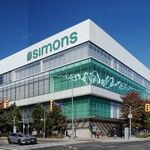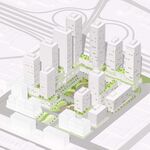Sure, and that's with an exclusive right of way, something that for whatever reason (maybe TTC, maybe city wishes, maybe community input, I don't know) was not going to happen with Eglinton.
It wasn't planned for Eglinton because the TTC CHOSE not to do it for Eglinton. Aside from the SRT, the TTC seems to have a fetish for in-median LRT. Aside from the occasional tunneled sections where necessary, nearly all of TC is in-median LRT. I really don't think the Richview corridor was given it's due dilligence, especially considering that it was studied for BRT with the Eglinton West subway project as was found to be a viable BRT corridor.
Ok, I get it now. You want to put a mode transfer to the west. Aren't there enough complainers about the mode change at the end of the Sheppard stubway?
The west portion of the ECLRT will not be built for the next 10+ years. If we can get BRT there now as an interim solution, not only will it get rapid transit there quicker, it will make upgrading to LRT a lot easier, as the ROW and stations will already be there. And my complaint with the SELRT is not that there's a mode change, but that it castrates the Sheppard Subway from being extended. It's a lot easier to go from BRT to LRT or subway than it is to go from LRT to subway.
Just curious how you'd do this grade separation at some intersections. Would you be trenching your BRT under the cross-streets or elevating it to bridge them? Both would add significant engineering work and cost.
What cross-streets would you be doing this grade separation? At the major ones passengers might want to be transferring to north/south routes (and so would have to ascend/descend a level to get their connection). The minor ones probably wouldn't have the traffic loading to present much of an impact on Eglinton through traffic, particularly if they got some transit priority to the signals.
I would trench just before the intersection, and put the station directly underneath the cross street. This would provide shelter from the winter elements, and would allow for an efficient transfer. Side streets would likely not need a grade separation (see Iris Station on the Southwest Transitway, at-grade intersection with Transitway stops on both sides). More major stations at more important intersections would be grade separated, and hopefully equipped with passing lanes.
Yes, the cost associated with that would be higher, but remember, you're only trenching 5-10% of the total route, everything between stations would be at-grade. And the cost of doing the trenches is still less than the cost of ripping apart an entire street (utilities, services, and all), and rebuilding it. Not to mention, it's significantly less disruptive. BRT also has the advantage of allowing bus routes to use the BRT route for a portion of their route, in order to increase reliability. Many transit routes in Ottawa do this (Transitway to/from downtown, get off the Transitway at a given exit, and then become a local service servicing a specific suburban community).




